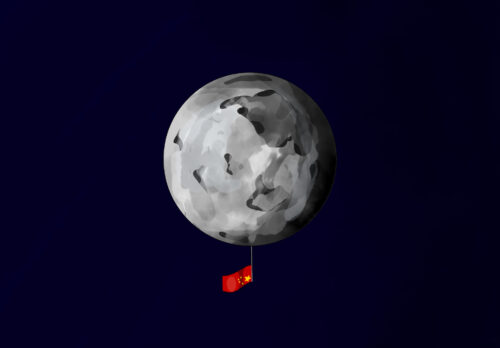Chinese lunar lander reaches Moon, on mission to make China third nation to bring back rocks
The Chang’e-5 lunar lander touched down on the Moon today, and will spend two days collecting two kilograms of rocks before returning to Earth in mid-December. If it is successful, China will become the third nation to retrieve lunar samples.

A week ago, on November 24, China’s fifth spacecraft to be launched to the Moon, and the third carrying a lunar lander, took off from Earth. Today, it landed successfully on the lunar surface, marking another step forward for China’s ambitious space program.
- The mission of Chang’e-5 (嫦娥 Cháng’é), the robotic space probe named after a goddess in Chinese mythology who lives on the Moon, is to make “the first lunar sample return attempt since the end of the U.S. Apollo and Soviet Luna missions in the 1970s,” per SpaceNews.
- The previously unvisited area of the Moon where Chang’e-5 landed has fewer crater marks than elsewhere, which “suggest that it contains basaltic rocks created by late-stage volcanism which could be billions of years younger than those collected from Apollo and Soviet Luna landing sites.”
After two days collecting two kilograms (4.4 pounds) of rocks, Chang’e-5 will embark on what SpaceNews says is “perhaps the most challenging stages” of its mission. The process of returning to the lunar orbit, waiting for the perfect trajectory back to Earth, and eventually landing in a remote part of Inner Mongolia will take until mid-December.
What’s next?
Chang’e-6, China’s next lunar lander, was “engineered at the same time as Chang’e-5 to provide a backup in the event of failure,” SpaceNews says, but if Chang’e-5 returns successfully, then Chang’e-6 would be “repurposed for a landing at the lunar south pole around 2023.”
After that, two more Moon landing missions are planned in the coming decade, “ahead of China’s aspiration of building a moon base for astronauts in the 2030s,” the New York Times reports.
Meanwhile, China is making plenty of advancements in both the public and private space sectors. In the public space sector, for example:
- The final satellite for the BeiDou Navigation Satellite System, China’s competitor to the U.S.-controlled GPS, was launched this summer.
- BeiDou now provides better coverage than GPS in “capital cities for 165 of 195 major countries — or 85% of those capitals,” according to data from U.S. satellite receiver company Trimble, Nikkei Asian Review reports.
The private space sector in China is booming, and attracting record levels of investment, for example:
- The communications satellite company GalaxySpace announced earlier this month that it had taken in a new funding round that gave it a valuation of 8 billion yuan ($1.2 billion), making it the first unicorn among China’s satellite internet industry startups.
- Remote sensing satellite company Chang Guang Satellite Technology “has raised 2.46 billion yuan ($375 million) in its pre-IPO funding round,” Caixin reports today.






